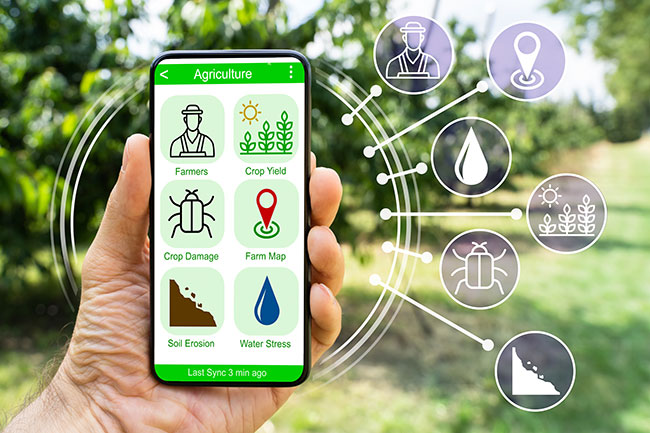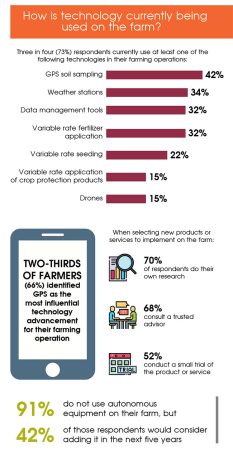
Features
AG Tech
Cultivating Innovation: The current state of technology in agriculture
July 1, 2022 By Top Crop Manager
 Photo courtesy of AndreyPopov/GETTY; BELOW: SiberianArt/GETTY.
Photo courtesy of AndreyPopov/GETTY; BELOW: SiberianArt/GETTY. The idea of working smarter, not harder, has been implemented on many Canadian farms with the widespread adoption of ag technology. Of the 1,218 respondents to the Ag Tech Survey, 73 per cent indicated they have adopted at least one of the following types of technology on their farm: GPS soil sampling (42 per cent), weather stations (34 per cent), data management tools (32 per cent), variable rate fertilizer applications (32 per cent), variable rate seeding (22 per cent), variable rate of crop protection products (15 per cent) and drones (15 per cent).
Kerry Wright, CEO of the Canadian Agri-Food Automation and Intelligence Network, points out how interesting it is that survey respondents use at least one of the technology options listed, alluding to the idea that many farms likely use more than one of the aforementioned tools. “I think there will be a layering of these aspects as [farmers] learn to utilize these different tools,” Wright says. But, adding multiple tech tools will have barriers, she adds. [Technology] has to be accessible and useable . . . easy to use and cost effective.”
Agriculture is a complex industry, so implementing new technology takes time, and the process is often met with mixed feelings. Some advancements, like GPS, have been warmly welcomed across the industry – in fact, sixty-six per cent of farmers surveyed identified GPS as the most influential advancement for their farming operation. “GPS was so attractive because it was simple. You just buy it and use it,” says Alex Melnitchouck, chief technology officer, digital ag at Olds College.

Icons courtesy of FLATICON.
But other developments haven’t been met with such positive reception just yet. Take autonomous equipment, for example: when asked about the use of autonomous equipment on the farm, 91 per cent of survey respondents indicated they do not currently use any. Of that group, 42 per cent indicated they would consider adding autonomous equipment in the next five years.
When it comes to choosing new products or services to use on the farm, there’s nothing like real-life research and experience to influence decision making. Many respondents indicated they rely on several sources for information before taking a chance on something new, including learning from early adopters, gleaning experience from friends and neighbours and seeking advice from trusted advisors. Seventy per cent of respondents answered they do their own research, and 52 per cent reported conducting a small trial of the product or service to aid in decision making.
Darcy Herauf, director, FCC Ag Expert, suspects the fear of missing out may influence a farmer’s decision to try something new, pointing to how quickly GPS rose to popularity as an example: it’s hard not to be jealous of the perfectly straight seeded lines in a neighbouring field, he notes.
The key, the panellists agree, is to streamline existing technology, making it highly scalable and easy to access and use, and to foster interoperability between systems so farms can access their information all in one place.
Watch more insights about the current state of technology in agriculture